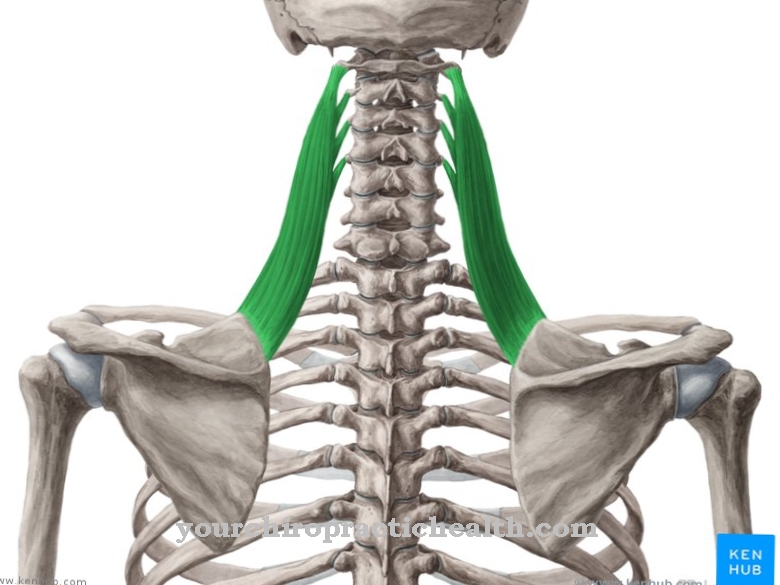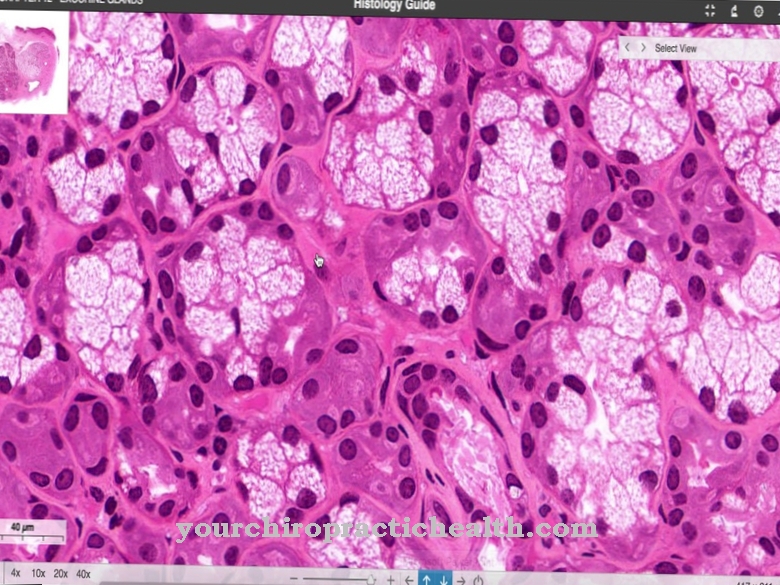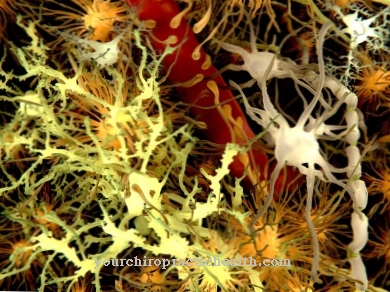The bile is formed in our liver. This bile juice is required for the process of fat digestion and transported to the duodenum through various passages.
What is the common bile duct?
The term "ductus" is the Latin term for gait. The word "choledochus" describes the function of the anatomical structure in the digestive tract: "absorbing the bile". Of the Common bile duct is also known as Main bile duct or large bile duct designated. It belongs to the area of the extrahepatic biliary tract. These are the bile ducts that are outside the liver.
Anatomy & structure
In the two lobes of the liver there is a multitude of small bile ducts that eventually merge with the right liver bile duct (right hepatic duct) and the left liver bile duct (left hepatic duct). The two bile ducts combine to form a common, very short bile duct, the common hepatic duct.
A duct from the gallbladder opens into the common hepatic duct. The further course of the united right and left bile duct, which leads out of the liver, is referred to as the common bile duct from the point of view of the union with the ductus cysticus. The main bile duct runs above the duodenum in the direction of the pancreas. The pancreas also produces digestive juices. They are transported out of the pancreas through an excretory duct (ductus pancreaticus). The common bile duct runs behind the head of the pancreas and is closely intertwined with the tissue of the digestive organ in the area of the pancreas.
Finally, the common bile duct runs behind the duodenum and continues within the intestinal wall. The integration of the common bile duct in the intestinal wall creates a fold of mucous membrane called the plica longitudinalis duodeni. As a rule, the common bile duct unites at the end of the longitudinal fold of the mucous membrane with the duct of the pancreas (ductus pancreaticus). But this union does not exist in all people. When it is put on, a bulge forms at the point where the two ducts meet, which in anatomy is called the ampulla hepatopancreatica. The duct from the pancreas and the large bile duct merge into the intestinal tube of the duodenum. The entry point is the major duodenal papilla.
The bile ducts, and thus also the main bile duct, have smooth muscles. In addition to the muscle layer, the common bile duct has connective tissue made up of collagenous and elastic fibers. Inside the main bile duct, the wall is covered with mucous membrane in which there are glands that secrete a secretion. This secretion gives the bile duct inside a high lubricity. This allows the bile to flow better. The common bile duct is between six and eight centimeters long and the approximate thickness of a pencil.
Function & tasks
The job of the common bile duct is to transport the bile from the liver to the duodenum. There it is needed for the digestive process. In the section directly in front of the entry into the duodenum, the common bile duct, which is united with the pancreatic duct, consists of smooth musculature arranged in a ring. This structure also has turns like a spiral. The area is called the odd sphincter. The task of the odd sphincter is to be able to open and close the entry point if necessary.
When the digestive process in the duodenum is active, the odd sphincter is open and allows bile and digestive secretions from the pancreas into the intestine. The digestive juices remain in the common bile duct during periods of rest. The ring-shaped sphincter prevents it from flowing into the intestinal tube.
Diseases
When the bile is formed, gallstones can form. These stones usually collect in the gallbladder. However, it is also possible that one or more gallstones migrate into the common bile duct. If the main bile duct is blocked by stones, it is a disease (choledocholithiasis) that can have serious consequences. The bile juice no longer reaches the duodenum for the digestive process. Jaundice can develop. The accumulation of the bile leads to inflammation and life-threatening liver failure.
Depending on the number and size of the calculus, the patients may not show any symptoms, but they can also suffer from severe cramping pain. In addition, dizziness, vomiting and a feeling of fullness and pressure in the epigastrum may occur. Gallstones in the common bile duct and in the other bile ducts can be visualized with ultrasound or magnetic resonance imaging. During the ultrasound examination, a probe is pushed through the oral cavity into the digestive tract up to the intestines.
If the imaging confirms the suspicion that the common bile duct is occluded, an endoscopic surgical procedure is used to attempt to remove the concrements from the common bile duct (endoscopic retrograde cholangiopancreatography).
Narrowings or occlusions within the common bile duct can also be caused by tumors. Cholangiocarcinoma is a malignant tumor of the bile ducts. The common bile duct can also be affected. The tumor mass can block the flow path in the bile duct. Other tumors that press on the large bile duct in the abdomen can also lead to problems with the drainage of the bile. If the tumor cannot be completely surgically removed, biliary tract cancer is incurable. Nevertheless, attempts are being made to curb possible cancer growth in the common bile duct with chemotherapy and radiation therapy. Other methods of treating biliary tract cancer are still in the research phase.
Typical & common gallbladder diseases
- Gallstones
- Gallbladder inflammation
- Gallbladder cancer and bile duct cancer
- Biliary colic
- Cholestasis
























.jpg)



